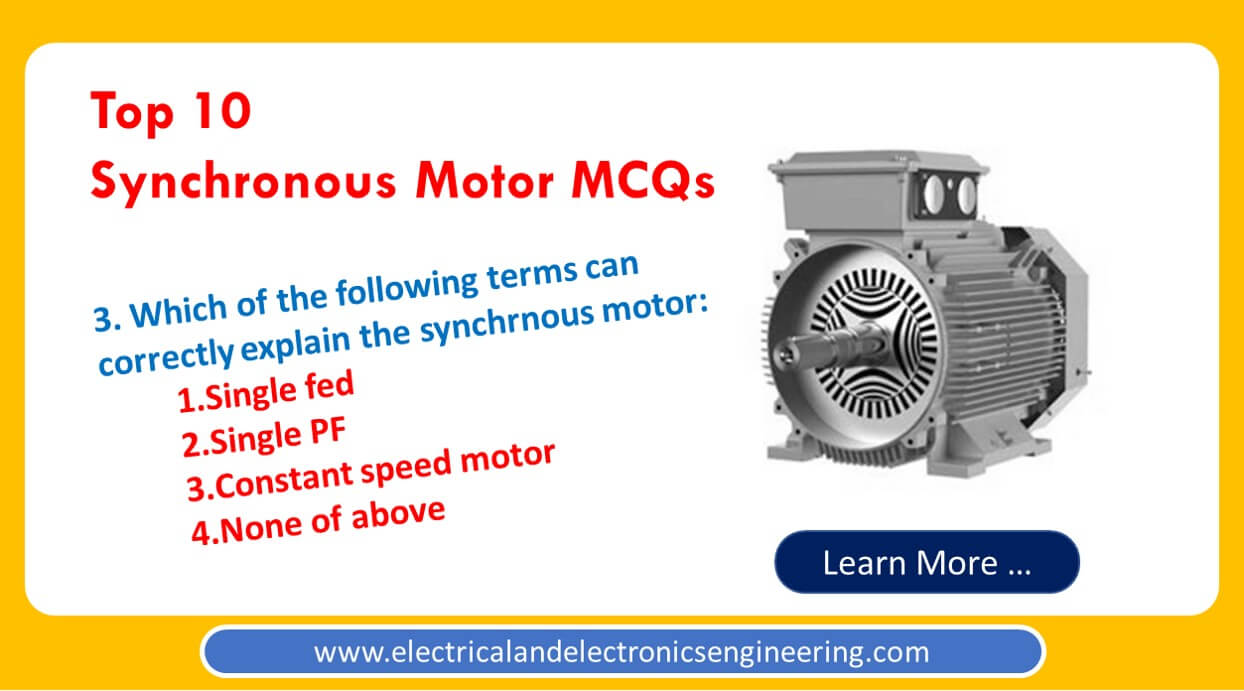1. The correct statement about the speed of synchronous motor:
- It remains the same from no load to full load
- It starts decreasing and becomes zero at full load
- It starts increasing and bursts at full load
- It has divergent behavior
Correct answer: 1.
2. Hunting in synchronous motor can arise due to:
- Change in excitation
- Change in speed
- Any change in system powering the motor
- Any of above
Correct answer: 4.
3. Which of the following terms can correctly explain the synchrnous motor:
- Single fed
- Single PF
- Constant speed motor
- None of above
Correct answer: 3
4. The V curve in a synchronous motor illustrates relation between:
- Armature current and Voltage
- Field current and voltage
- Armature current and Field current
- Field Current and Armature voltage
Correct answer: 3
5. A synchronous motor for power factor correction operates at:
- No load and under excited
- No load and over excited
- Full load and under excited
- Full load and over excited
Correct answer: 2
6. The foremost reason for employing amortissuer windings is:
- Reduce losses
- Improve power factor
- Start motor
- Increase haunting
Correct answer: 3
8. A 50 Hz salient pole motor having 30 poles turns at:
- 100 r.p.m
- 200 r.p.m
- 300 r.p.m
- 350 r.p.m
Correct answer: 2
Speed = (120 * f)/P = 120*50/30 = 200 r.p.m
9. The condition at which synchronous motor tends to be cheaper then induction motor:
- High speed, High efficiency
- High speed, Low efficiency
- Low speed, High efficiency
- None of above
Correct answer: 3
At low speeds, the induction motor are costly and have low power factor as well as efficiency
10. The number of poles on a 60 Hz synchronous motor turning at 200 rpm is:
- 16
- 30
- 32
- 36
Correct answer: 4
Number of poles = (120 * 60 Hz) / 200 = 36
